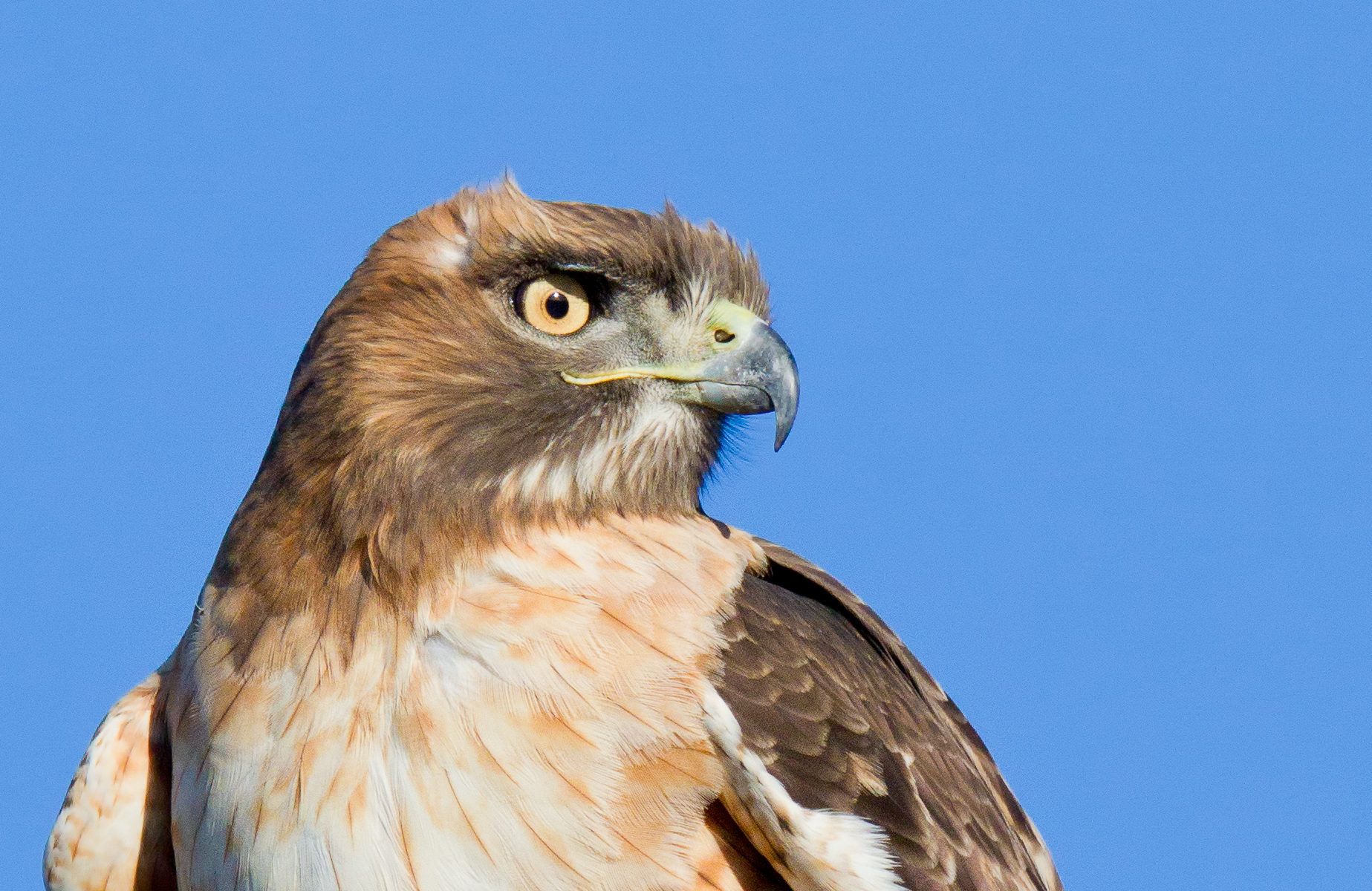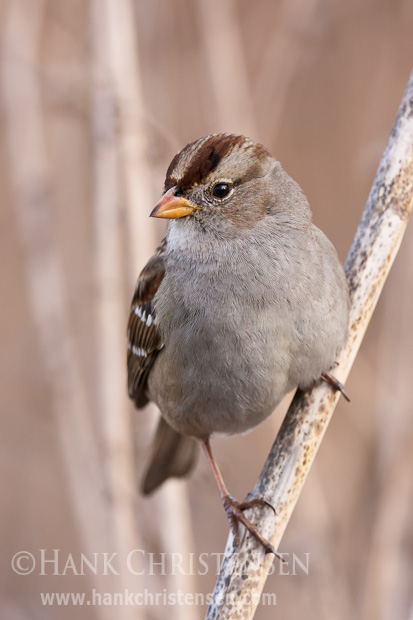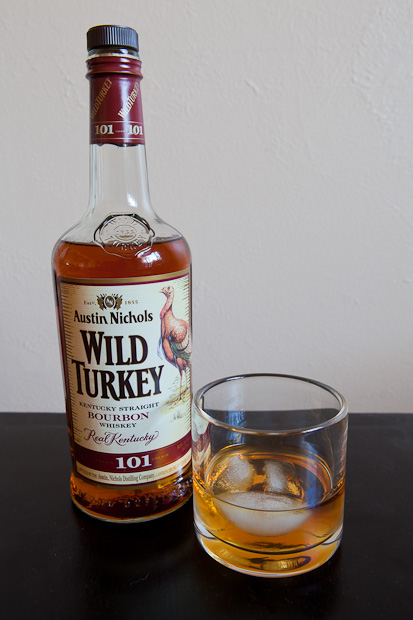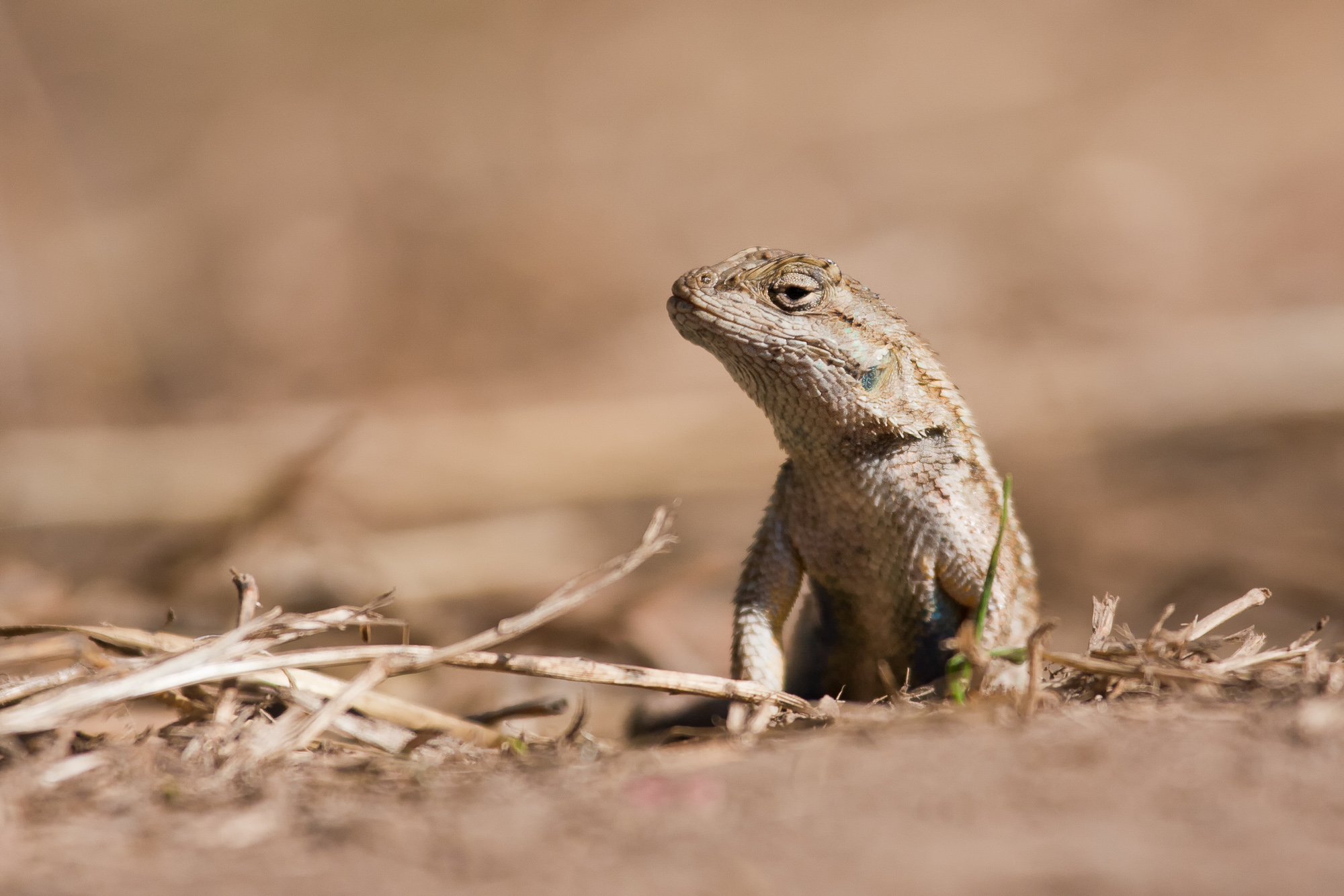Okay, so I like to cheat every once in a while. There are “purists” out there who would shake their head with shame at the image above, and I have to admit, I used to side with them more often then not. But I couldn’t help myself the other day playing around with some of my photos to see how I could create other successful photos just by cropping heavily.
The photo above is a head and shoulder crop of the photo below. My distance to this red-tailed hawk was limited by the height of the pole on which he was perched. I was already in pretty close, with an 800mm lens on a 1.6x crop sensor, giving me a 35mm equivalent focal length of 1280mm. If I’d walked any closer to pole, the angle of inclination would have been too severe, which was not the kind of shot I was going after. The photo was okay, but that pole really bothered me. I much prefer natural scenes without visible “hand-of-man” elements.
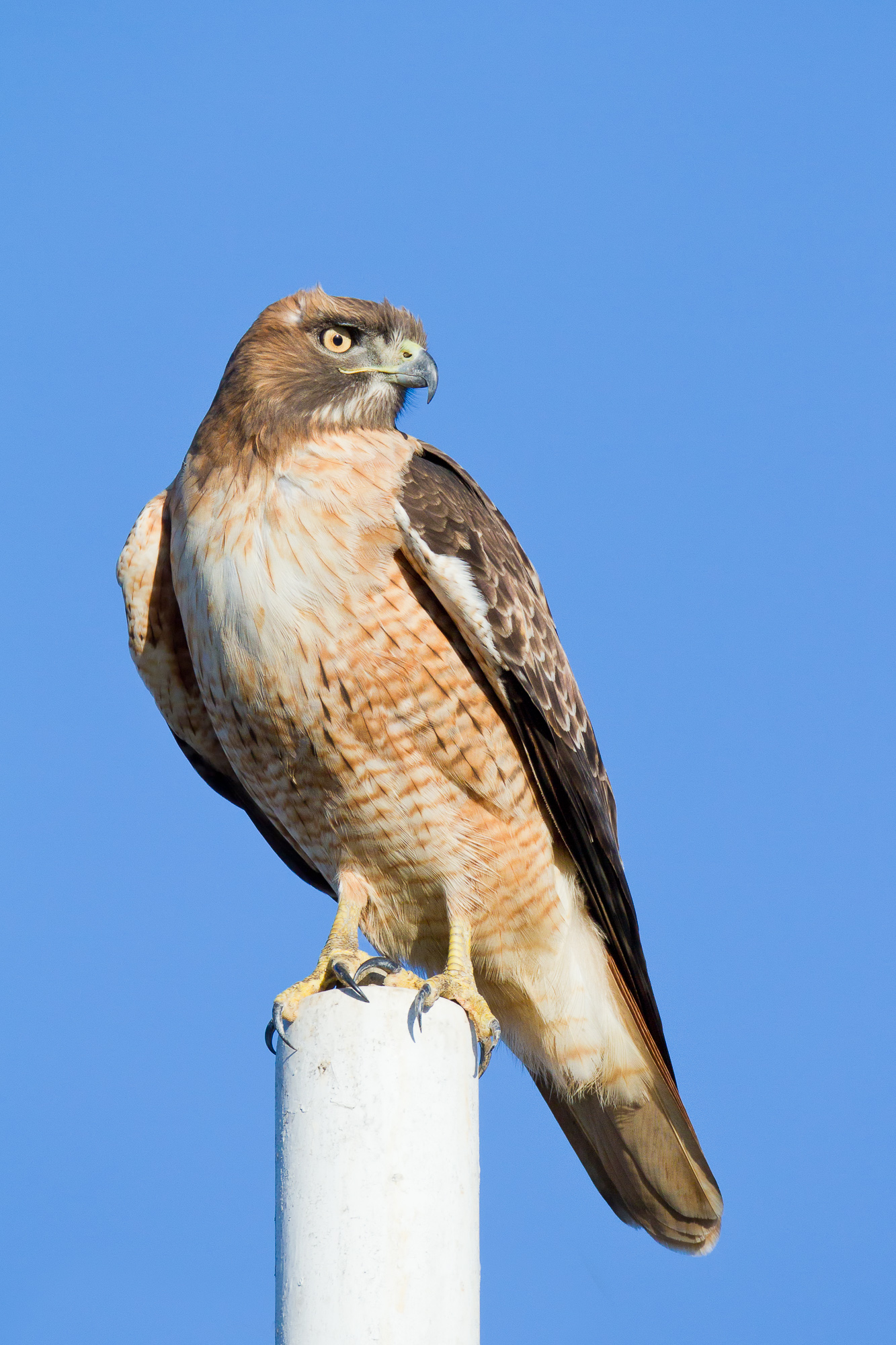
So, once I got the photo onto my computer, I decided to start playing with the crop, if only to see what my photo might have looked like if I’d had more lens reach. I was fully expecting a pixelated mess, but to my astonishment, the cropped image wasn’t that bad. I won’t be making a 30×40 inch print of it any time soon, but for small prints and web use, it works. Here, the win definitely goes to the massive 18 megapixel sensor and the amazing amount of detail it can capture. Of course, some credit should go to me for the technique required for the razor sharpness of the image!
There are many new opportunities for photographers to express their creativity as a direct result of improvements in technology. Five years ago, I could not have done what I did above. The image quality of the cropped photo would have been too poor to stand up on its own. It is truly amazing how far the world of digital photography has advanced in recent years. Who knows what the next ten years will bring?

